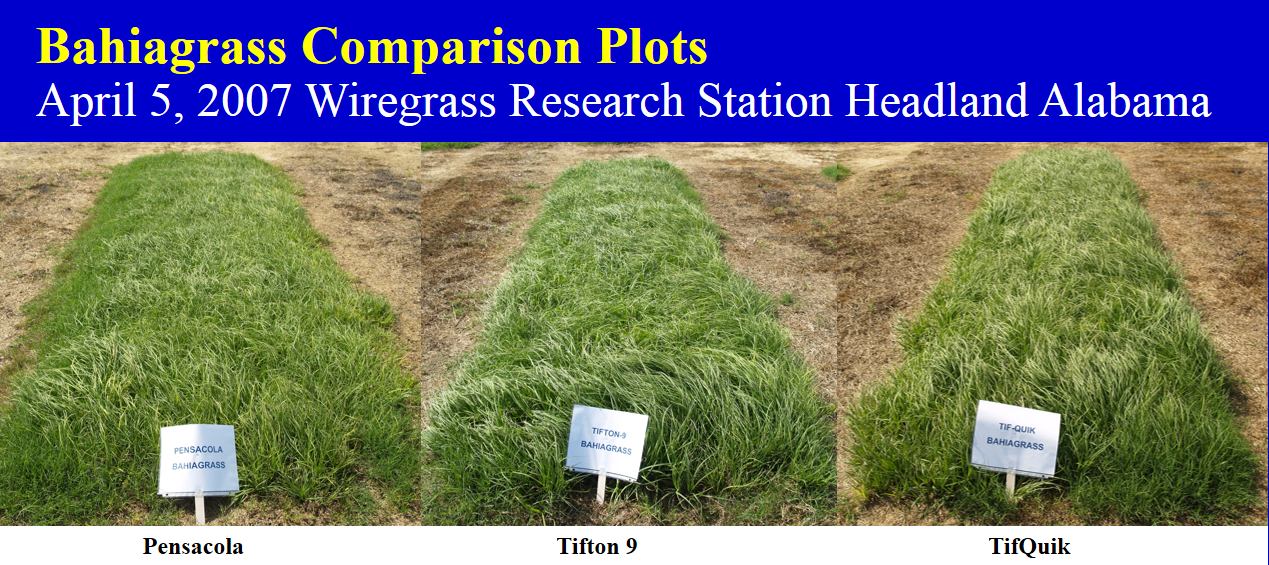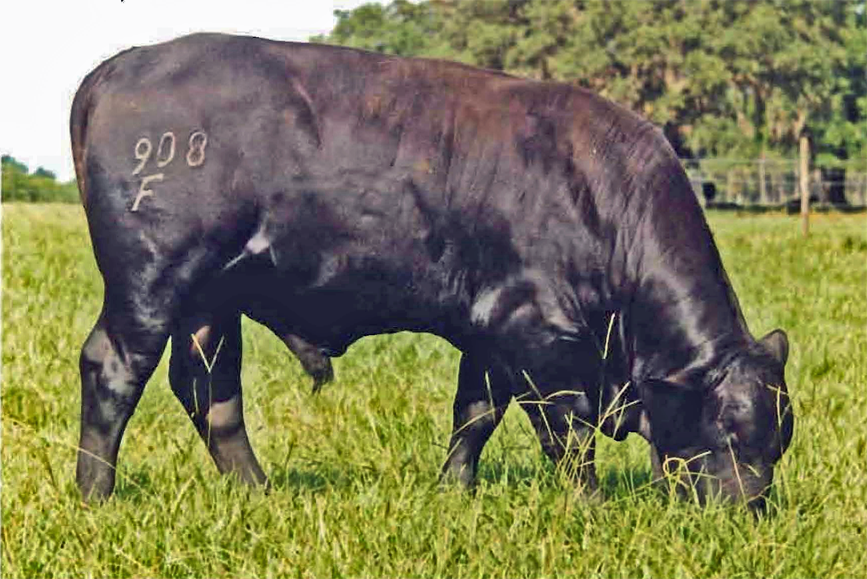Spring is here, and the number of calls that come in to the local Extension Office increases dramatically with the warmer weather. One question that often comes this time of year is “What grass I should plant for a pasture?” Whether this a new field, or a field that has been in some other crop that will be converted to pasture, there are a number of options for livestock grazing. The most versatile and widely used grass in Florida is bahiagrass. In a 2002 survey of Northwest Florida Cattle Ranchers, 96% had bahiagrass pastures, and 70% utilized bahiagrass for at least part of their annual hay production. There are other choices, but especially for smaller ranches with limited acreage, equipment, and resources, bahiagrass is normally the best choice.
Bahiagrass is well adapted to the various soil types in Florida from sandy, drier sights, to damp flatwoods soils. It will not tolerate extended periods of standing water, and can be slow to establish in deep sands, but no other forage species has as wider range of adaptability to Florida soils. Bahiagrass can tolerate close grazing, with short rotations, because the plant has rhizomes (underground stems) where plant sugars are stored. Unlike Bermudagrasses or native bunch grasses, cattle never consume the stored energy in bahiagrass. This allows for close grazing down to 1 inch with a short rest of only 7-15 days, before rotating back to the pasture. Most grasses have above ground stems and require more recovery time to flourish under grazing. Another key advantage of bahiagrass is that it is planted with seed, unlike Bermudagrass or Limpograss that must be planted from dug sprigs. Bermudagrasses tend to have higher yields and better nutrient quality (feed value), which make them more popular for use for hay fields. However, if fertilized correctly and cut prior to maturity (seed head formation), Bahiagrass can make decent quality hay for cattle.
Of course, the question that always follows is, “Which cultivar would be best: Pensacola, Argentine, Tifton 9, TifQuik, or Riata?” Each cultivar has unique attributes that make them attractive for use in Florida pastures.
|
Bahiagrass Cultivar |
Attributes |
*Yield Tons/acre |
|
Pensacola |
|
3.7 |
|
Argentine |
|
3.2 |
|
Tifton 9 |
|
4.3 |
|
TifQuik |
|
4.5 |
|
Riata |
|
4.7 |
|
*2006 Cultivar Test – UF/IFAS North Florida Research and Education Center Marianna Beef Unit |
||
For more information on planting and managing bahiagrass pastures, download Bahiagrass: Overview and Management. For information on other forage options, go to the Forages of Florida website. Of course, there are always unique considerations for your operation and location, so for a specialized recommendation, contact the UF/IFAS Extension Agriculture Agent that serves your home county.

Demonstration plots show the advantage in early spring growth of Tifton 9 and TifQuik over the original Pensacola bahiagrass.
- November 2025 Weather Summary & Winter Outlook - December 5, 2025
- Friday Feature: The History of Beekeeping - December 5, 2025
- Friday Feature:Malone Pecan Festival Tractorcade - November 21, 2025

